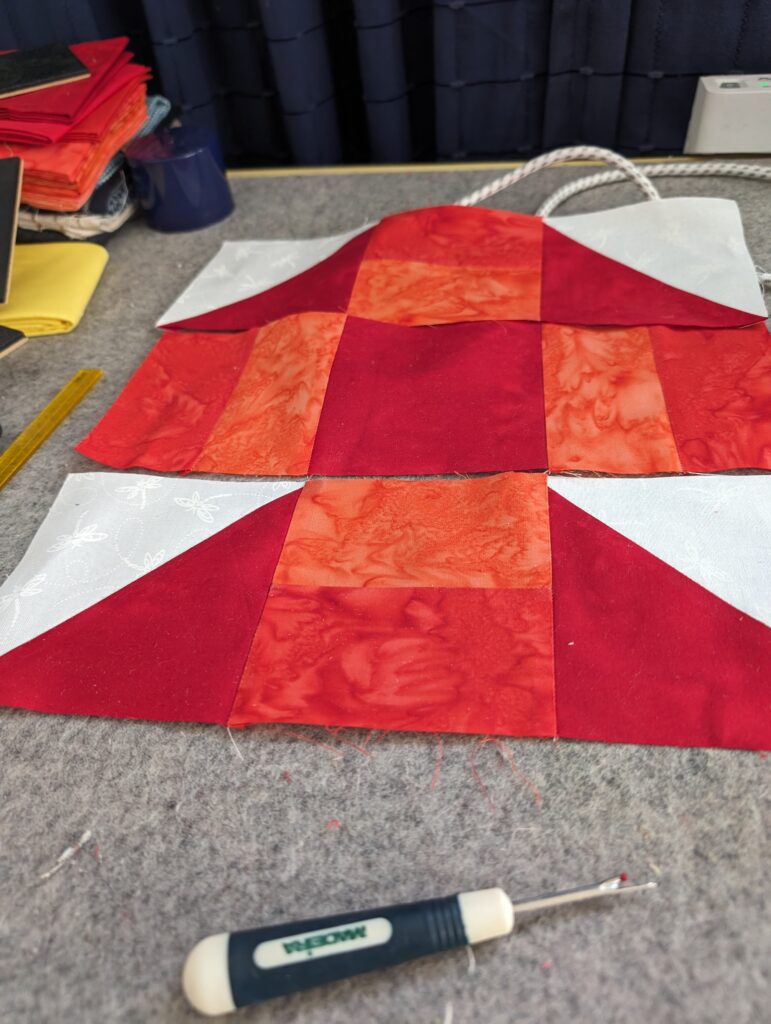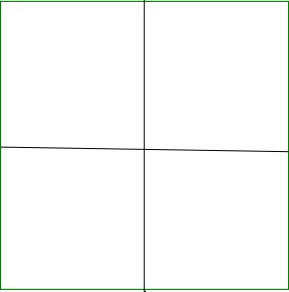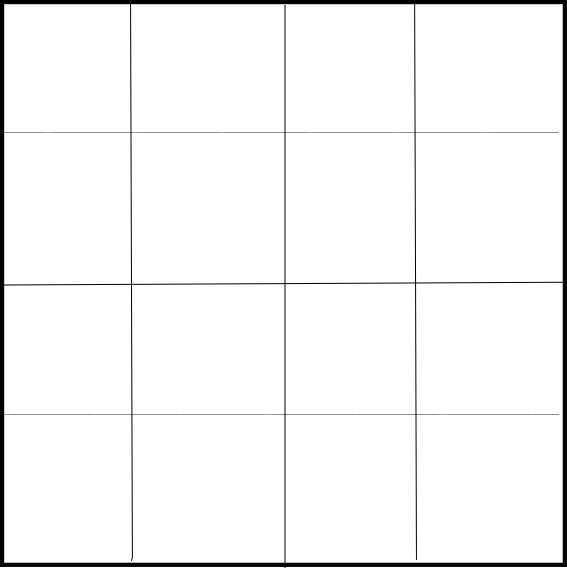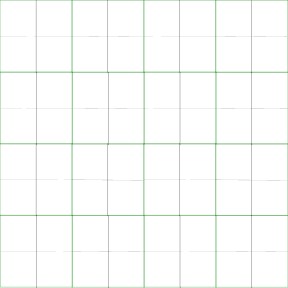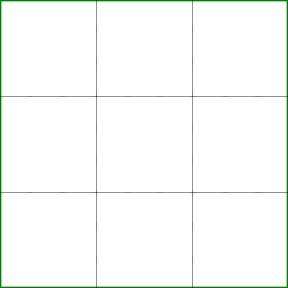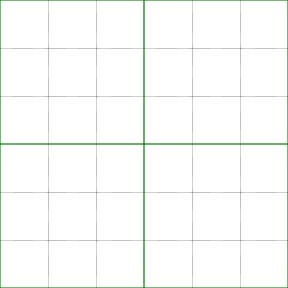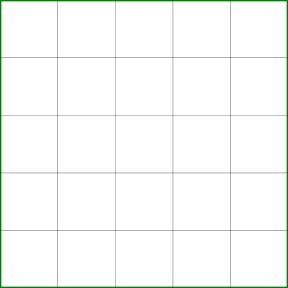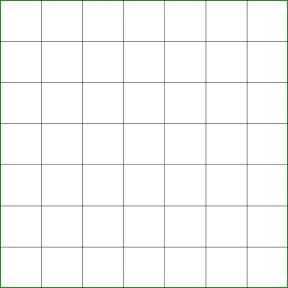Block 2 – Billie’s Sampler
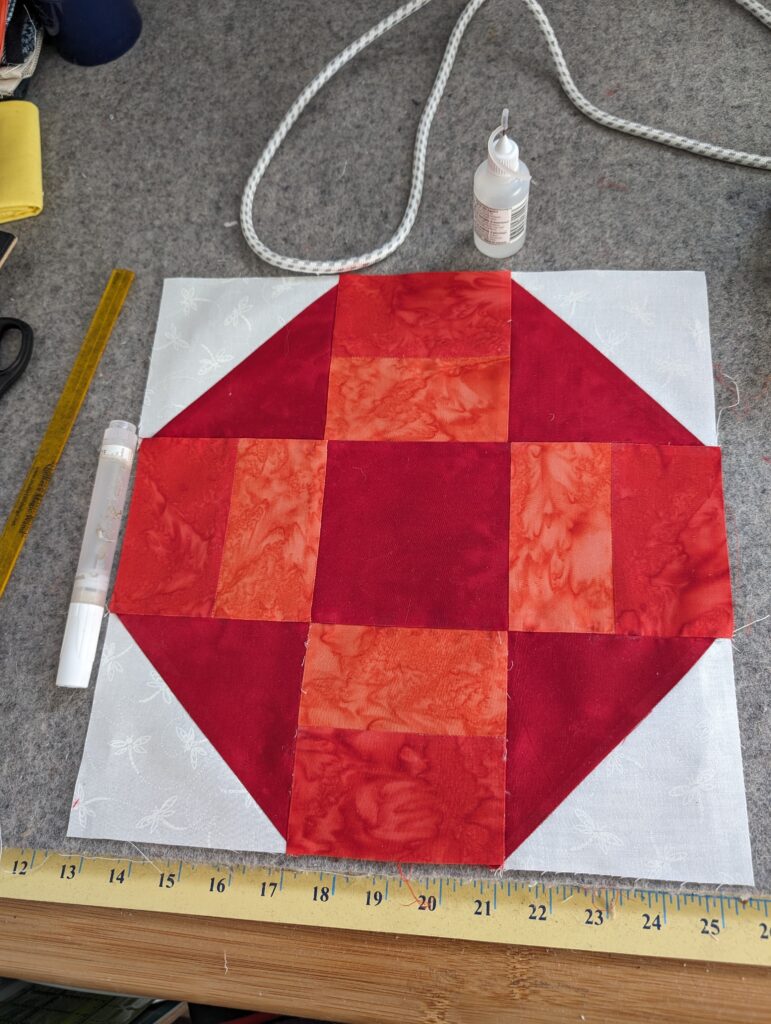
Monkey Wrench is a simple Nine (9) Patch Pieced Block. The Finished size for all the blocks in the Billie’s Smapler is 12×12″ inches.
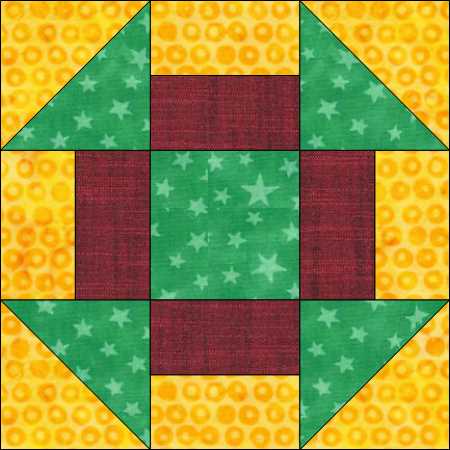
Above is the grid layout for the Monkey Wrench block. Since we are working to create a 12×12″ inch block. Each sub block of this simple nine patch should be a finished 4×4″ inch sub block
Cutting Instructions
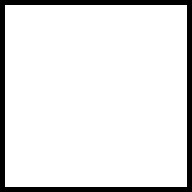
1 x 4 1/2 x 4 1/2″ inch Square Dark Fabric

4 x 2 1/2 x 4 1/2″ inch Rectagle Medium Fabric
4 x 2 1/2×4 1/2″ inch Rectable Light Fabric
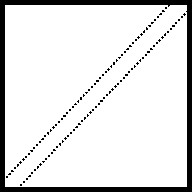
2 x 4 7/8″ inch Square Dark or Medium Fabric
2 x 4 7/8″ inch Square Light Fabric
Note: I cut my squares for HSTs larger than required and cut down. I cut mine a 5 1/2″ inches and trim
Making Half Square Triangles (HSTs)
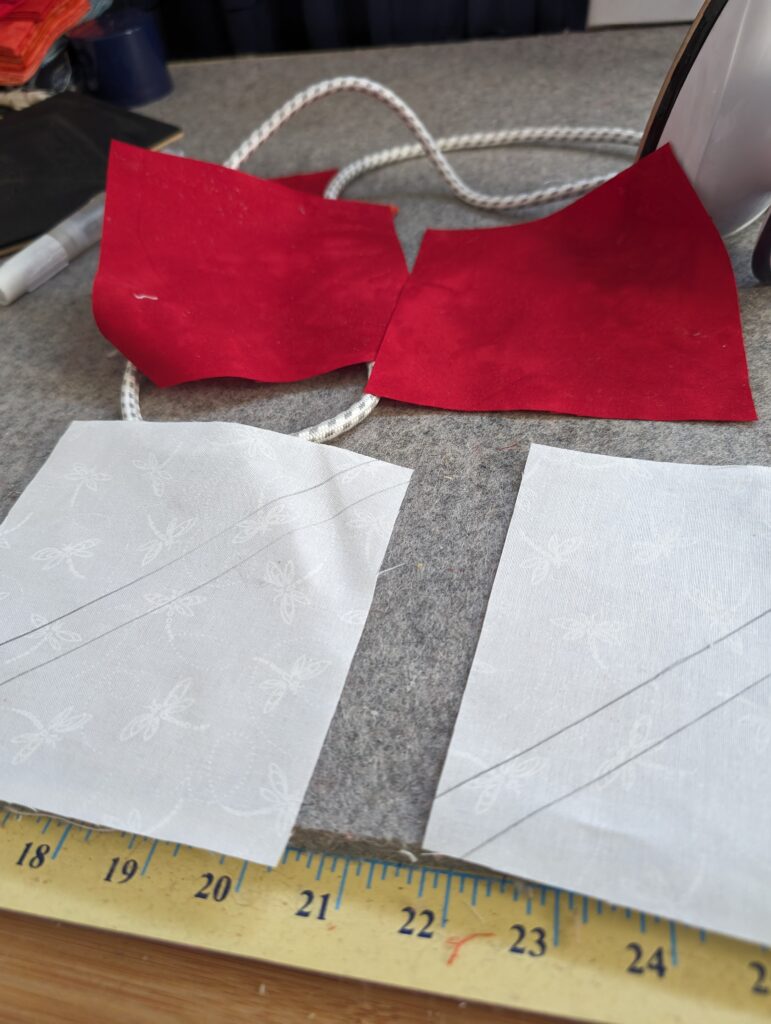
First mark the wrong side (or Back) of your light HST fabric with stitch lines. I mark my actual seam lines using a Studio 180 Magic wand. However many choose to mark a line from corner to corner.
Then using Acorn Precision Piecing Seam Align Glue, or other water soluble adhesive, add a few dot down the center corner to corner
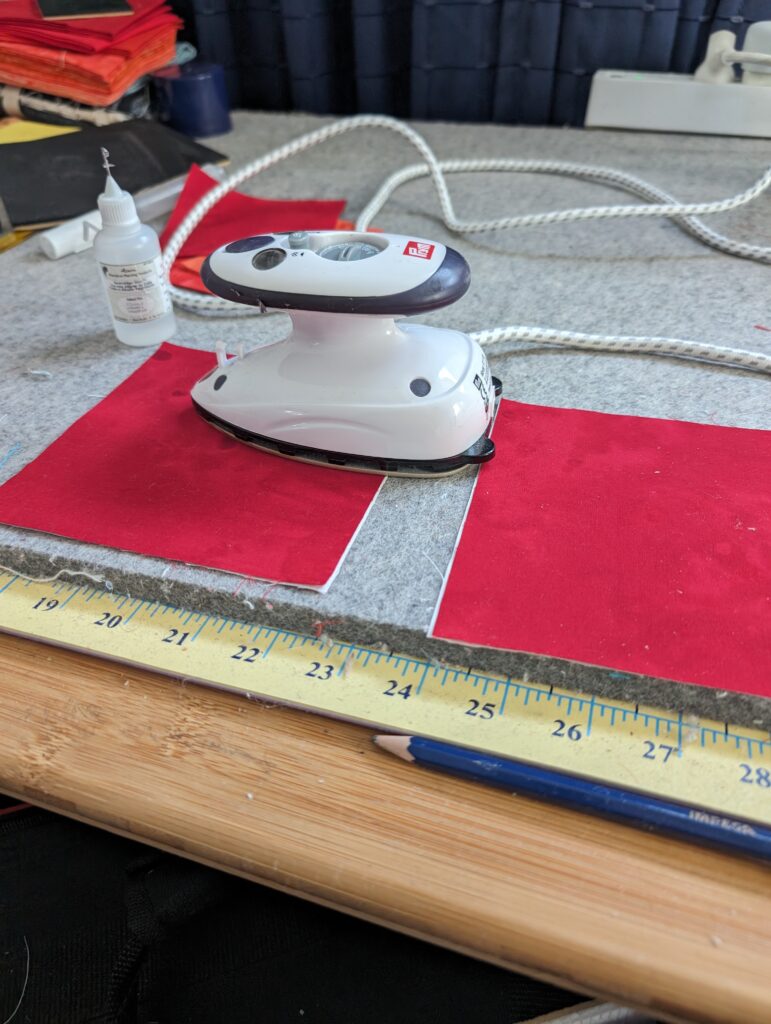
Placing your medium/dark and light HST fabric right sides together. using warm iron (no steam) press to dry the glue, holding the two pieces together securely
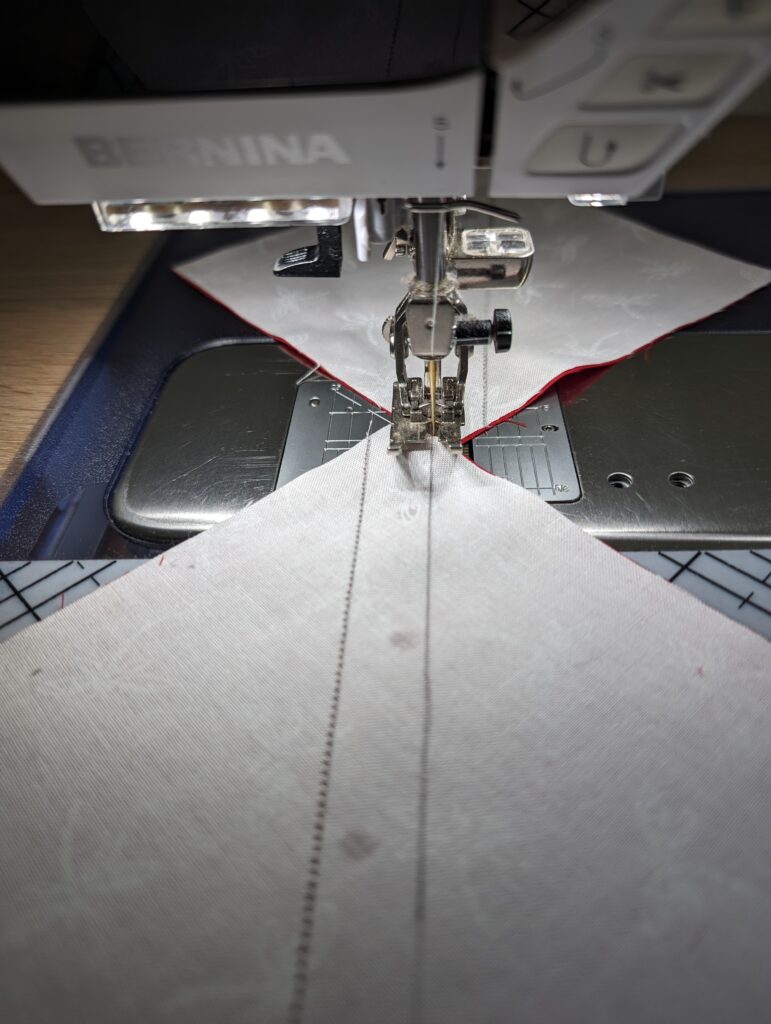
Now stitch on your stitiching lines (or 1/4″ from center line) on each side of your HST square.
Note I choose to use a 1.8mm stitch length. Using Amann Mettler Saba 180wt corespun polyester thread. I use this super thin tread with smaller stitch length because there is no thread bulk in my seams. Also I piece using a Organ HLx5 75/11
Note: I use Organ HLx5 needles because they are hardened, with a anti heat and anti glue coatings. This makes these needles last forever, I can easily get up to 6 months of regular piecing with each of the needles. Also, please take my advice these needles are not for the beginner sewist/quilter. The reason is because of the coatings and hardening, when you break one, it can severely knock your machine out of alignment. I have had to take my machine to the dealer/tech a couple times becuase I broke a needle and it moved the needle position or effected the machine timing.
Futhermore, Schmetz also makes an HLx5 needle. The Schemtz HLx5 version has a ball or dull point, where the Orgran version has a very sharp point which is what I prefer?
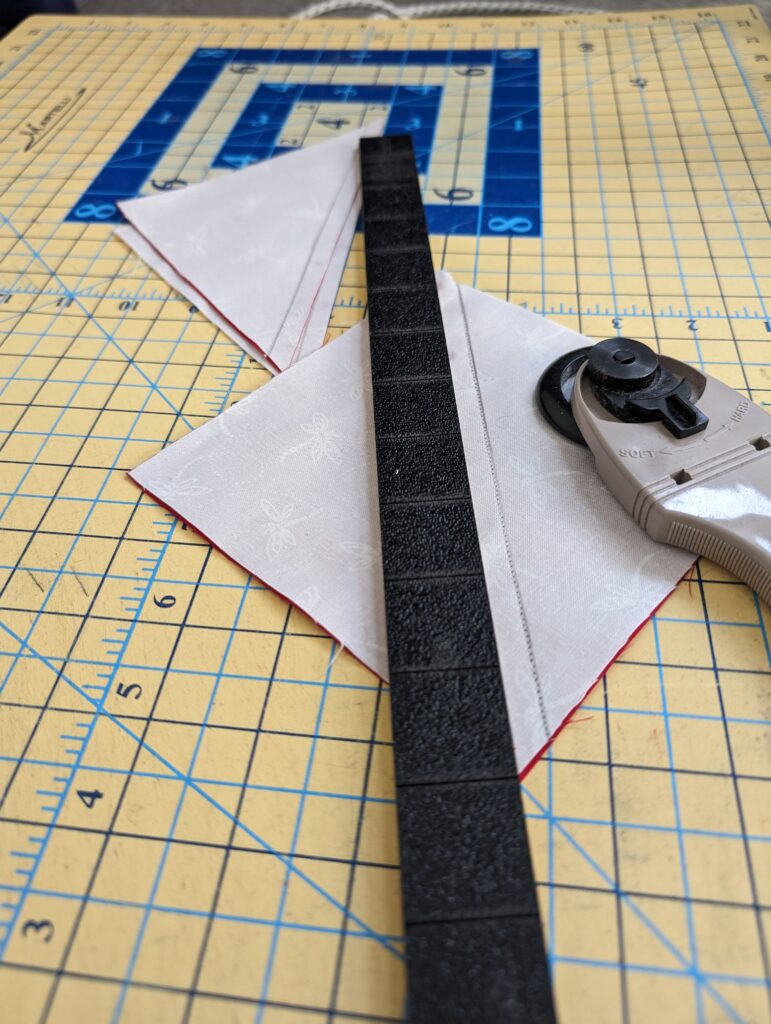
Cut your squares corner to corner between your two (2) seams. This will give you 4 HSTs. Press your triangles open to the darker fabric.
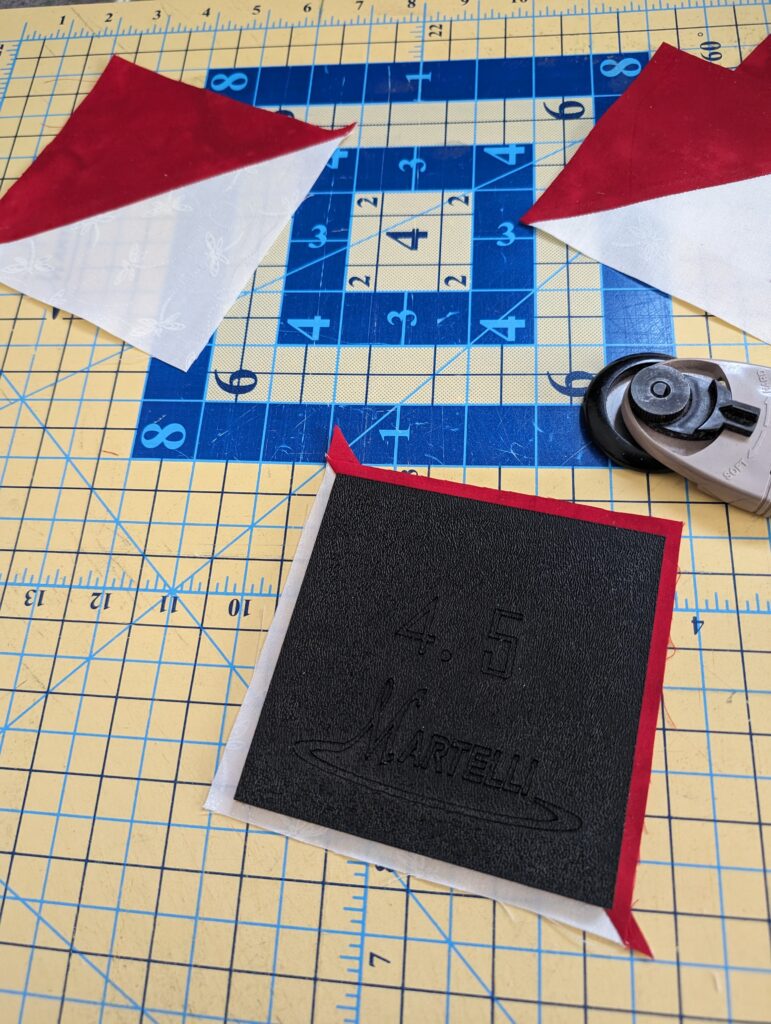
Using 5 1/2″ squares, it is needed to trim your HST squares down to 4 1/2″. I use my Martelli Square Template 4.5″. Align the corner points of template with your seam line. Trim using the edge of the template. This gives you a perfect 4 1/2″ square.
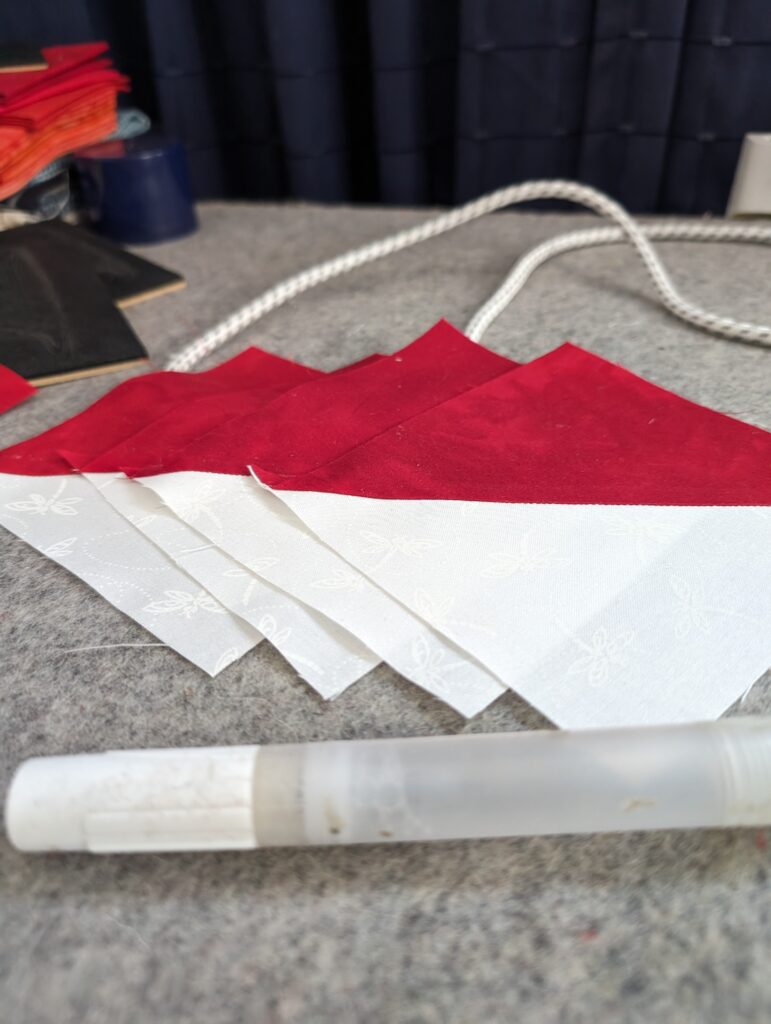
The HSTs step is complete?
Stripe Center Blocks
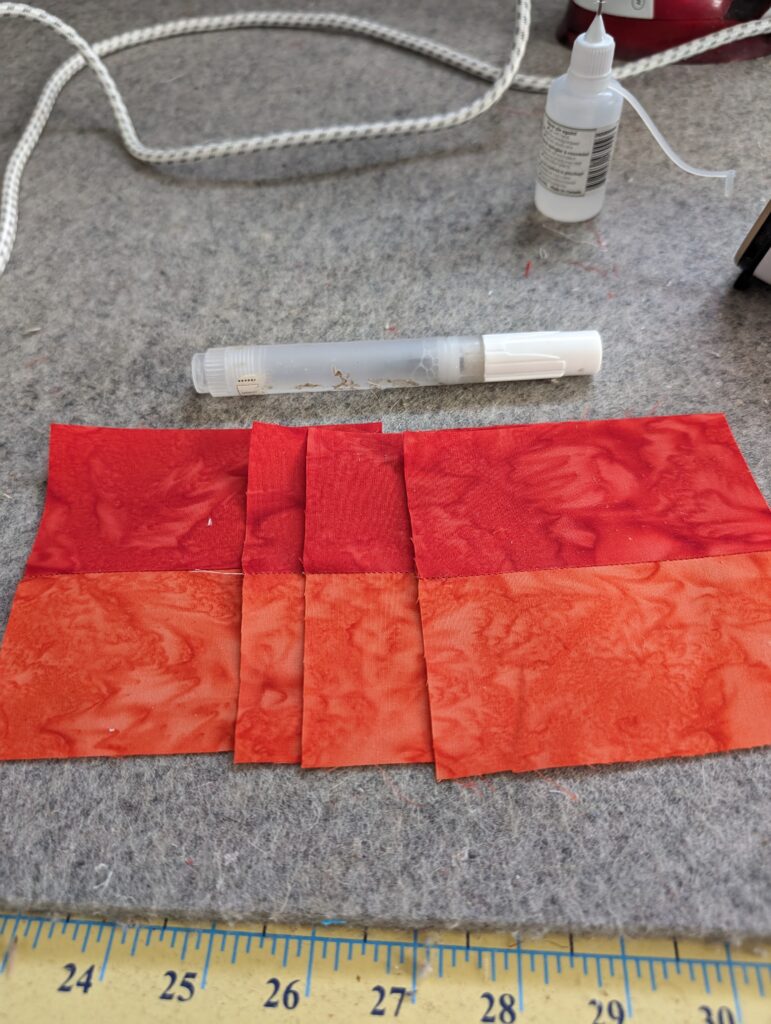
Taking your 4 Dark and Medium 2 1/2×4 1/2″ rectagles. Stitch each set together on the long side. Again I used Saba 180wt thread with 1.8mm stitch length. Press your 4 squares open to the dark.
Assembling Block
it is time to assemble the block. Being a simple nine patch. there are many ways to assemble the block. I choose to assemble 3 rows of 3 squares .
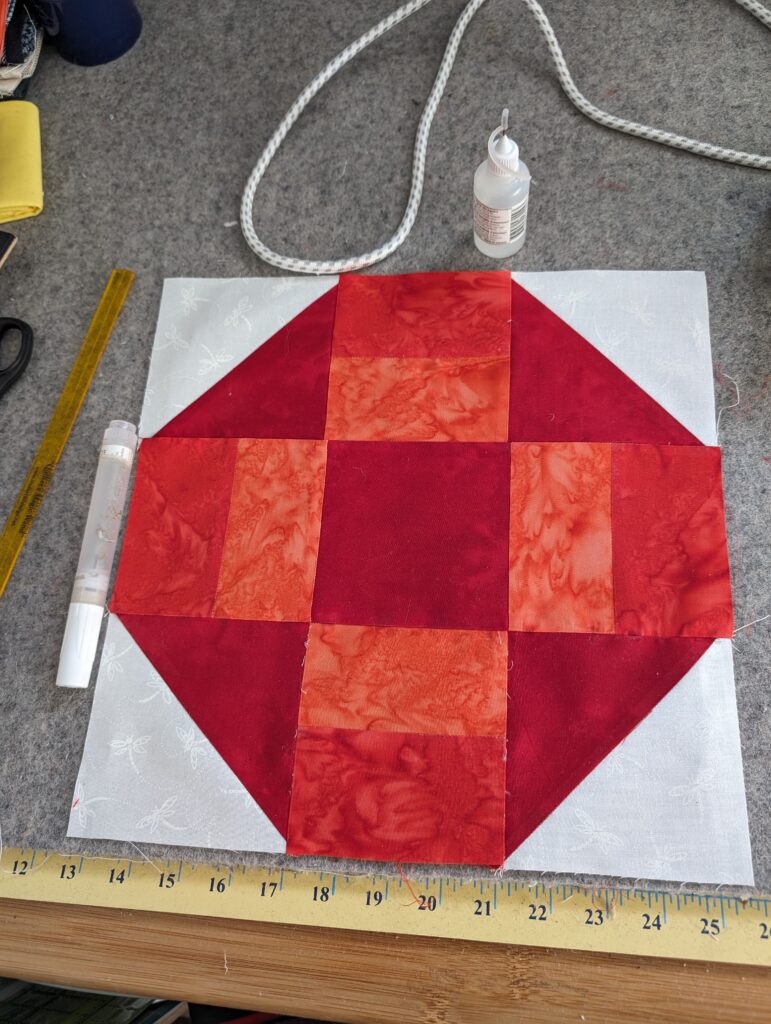
You need to lay your block out and decide how you want to assemble. As displayed you will notice I wanted my lighter strip facing the the darker center. And wanting the darker side of my HSTs to face the matching darker center. However the layout is up to you!
A moment of caution please take your time assembling your block. As you will noticed I turned one of the stripe blocks upside down. Meaning I had to spend a few moments with Jack the Ripper. And because if use smaller stitches, it takes a little longer and significant more caution when ripping a seam. So take your time and get your sub blocks placed and turned correctly before assembling.
